In a large number of countries, the symbol of Christmas is a plant called poinsettia (Poinsettia pulcherrima). The fact is that this houseplant looks most impressive just for the winter holidays, because at this time it is decorated with the red fire of "stars". It is also called the "Star of Bethlehem", as well as "Christmas star».
This flower has a short daylight. In this regard, its flowering is observed precisely on the short days of the cold season. Poinsettia blooms from 2 to 6 weeks.
Such a shrubby perennial plant like poinsettia (Euphorbia pulcherrima) is directly related to the genus Euphorbia of the Euphorbiaceae family. This flower comes from Central America, as well as tropical Mexico. It got its unusual name in honor of Joel Poinsett, who was the American ambassador to Mexico. It was he who, in 1825, was the first to bring poinsettia to the state of South Carolina and gave cuttings to botanists.
This genus unites only a few species, namely: spherical poinsettia, sparkling or shiny poinsettia, Mila poinsettia, most beautiful poinsettia, large horned poinsettia.
At home, the flower is grown as an annual or biennial. Branched shoots are erect. Most often, foliage is painted in a rich green color. However, two-colored foliage is also found - it has a cream-colored edging, and the cuttings are colored orange-red. The flowers collected in inflorescences are very small and they are colored green-yellow.
This plant blooms in December – February or January – March. Its small flowers are not the main advantage of the plant, but it lies in the bright bracts. The bright tops, painted pink, red, or white, are nothing more than modified foliage called bracts.
Bracts can hold out on poinsettia for quite a long time, or rather from 2 to 6 months. If you are going to give such a flower, you should opt for one that has not yet blossomed. In this case, spectacular bracts will delight you with their unusual beauty for a long time.
In this flower, after the flowering period comes to an end, all the foliage flies around. This is quite normal as the poinsettia begins a dormant period. There is no need to rush to throw away the gift, since this plant is still alive. Despite the fact that the bare shoots sticking out is a rather unsightly sight, if the flower is kept until the onset of winter, then it may well bloom again.
In different varieties of such a plant, the bracts have a different color. So, "Dorothy" is painted pink, "Jungle Bells" - two-color, "Emperor" and "Angelica" - red, and "Regina" - cream or white.
Content
Poinsettia care at home
It is important to remember that the juice of this flower is poisonous. Do not let it get on the mucous membranes of the eyes or respiratory tract. If, nevertheless, this happened, then the affected area must be thoroughly rinsed with plenty of running water. If you've worked with punsettia, be sure to wash your hands thoroughly. It is recommended to keep it away from small children and pets.
Temperature regime
Dislikes drafts and low air temperatures. Do not place it near open windows, and if the purchase is made in frosty weather, then you must make sure that the plant is packed as best as possible. When poinsettia blooms, the temperature in the room should not be less than 16 degrees. However, excessive warmth and low air humidity are also detrimental to it. Does not tolerate sudden temperature fluctuations. If something does not suit him, then the leaves begin to wither and fall off.
Illumination
Avoid direct sunlight. Good lighting is required during the flowering period. At this time, it is recommended to place it on the windows located in the southeastern or southern part of the room. In warm weather, the flower can be transferred to the balcony, but it requires a place that is protected by direct rays of the sun, wind, and also a draft.
How to water
Watering should be done as the substrate dries out. In the warm season, watering should be more abundant. Do not use too cold water for watering. Avoid waterlogging the ground, as this will lead to the formation of rot on the roots. In the event that, after the overflow, the flower began to wither, it is urgent to transplant into a fresh substrate. Do not forget to thoroughly wash the root system first, using a solution of potassium permanganate. If it is hot and dry in summer, it is recommended to moisten the poinsettia from a sprayer with warm water.
How to transplant
The transplant is carried out in May. To do this, use a slightly larger container. Don't forget a good drainage layer. A suitable soil mixture consists of turf, leaf and humus soil, as well as sand, taken in a ratio of 3: 2: 3: 1. A mixture of sod and leafy soil, sand and peat is also suitable. It is recommended to add a little humus. When the poinsettia is transplanted, they begin to water it, and after a while, fertilize the soil.
Dormant period
In March or April, the plant begins a dormant period. Its duration is 1.5 months, and it ends in May. At this time, you need to trim the shoots to a height of 10 centimeters from ground level in the pot. Place the plant in a dark place, and the temperature there should be between 12 and 16 degrees. Watering should be sparse.
How to get poinsettia to bloom for Christmas?
In order for the flowering to begin exactly by Christmas, you need to prepare the flower in the last days of September. The fact is that at home, flowering occurs at the end of the long night period. That is why it is recommended to artificially lengthen the nights at the beginning of the autumn period to 14 or 15 hours a day. All that is needed is to cover the poinsettia with a dark bag or dense material at night, and this should be done for 2 months in a row. In this case, in the dark, the plant should spend 14 hours. If possible, just take the flower to a very dark place. However, keep in mind that the access of fresh air to the plant should not be obstructed. In the daytime, he needs good lighting. If we neglect these manipulations, then the flowers will appear only at the end of the winter period.
Reproduction methods
 In the wild, seeds ripen in such a plant, but when grown in an apartment this does not happen or it happens, but extremely rarely. But even if this happens, the grown plant will not have the properties of the parent flower. The fact is that varieties bred by breeding are grown at home.
In the wild, seeds ripen in such a plant, but when grown in an apartment this does not happen or it happens, but extremely rarely. But even if this happens, the grown plant will not have the properties of the parent flower. The fact is that varieties bred by breeding are grown at home.
For reproduction, cuttings are usually used. From a large number of young shoots, you need to select the strongest (5 or 6), and just cut off the rest. Each pruned shoot can grow a new plant if rooted.
Cuttings should have 4 to 5 internodes. It should be trimmed directly under the lower node, and the leaves at the bottom should be removed.
The released juice is needed by the plant in order to prevent the development of rot. After the cuts are slightly dry, they should be treated with crushed charcoal. Do not touch the cut sites with your hands, and make sure that children or animals do not do this, as the juice can cause poisoning.
For rooting, as a rule, moist, loose soil or water is used. Rooting in a soil mixture is allowed, as for transplanting, or you can mix sand and peat in equal proportions. To help the poinsettia take root faster, it is recommended to use a growth stimulant (for example, heteroauxin). Place in a warm place (24-28 degrees). You need to regularly ventilate and spray. When the roots appear (after 4 weeks), young flowers should be planted in separate, not very large containers. The rooted stalk must be pruned to make the plant more branchy.
Pests and diseases
Due to low humidity, a flower can settle spider mite... It looks like a tiny red spider. It settles on the back of the leaves and envelops them with a thin white web. It can be destroyed quite simply by spraying and rinsing the leaves (especially the back side). Systemic insecticides can also be used. For preventive purposes, the flower must be systematically sprayed with lukewarm water.
A shield can also settle either mealybug... With the timely start of pest control, getting rid of them is not so difficult. It is recommended to wipe the foliage with a sponge soaked in soapy water. Then the plant needs to be rinsed under a warm shower, but do not forget to cover the soil with a waterproof material (film). Processing is carried out once a week until the pests are completely destroyed. If the lesion is severe, then you need to treat the poinsettia with specially designed products sold in a flower shop.
Settled thrips lead to the appearance of wavy elongated spots on the surface of the foliage, as well as to its twisting.
On the finest poinsettia, gray rot may appear. Gray specks form on the lower branches and foliage. Remove areas affected by rot and treat with an antifungal agent.

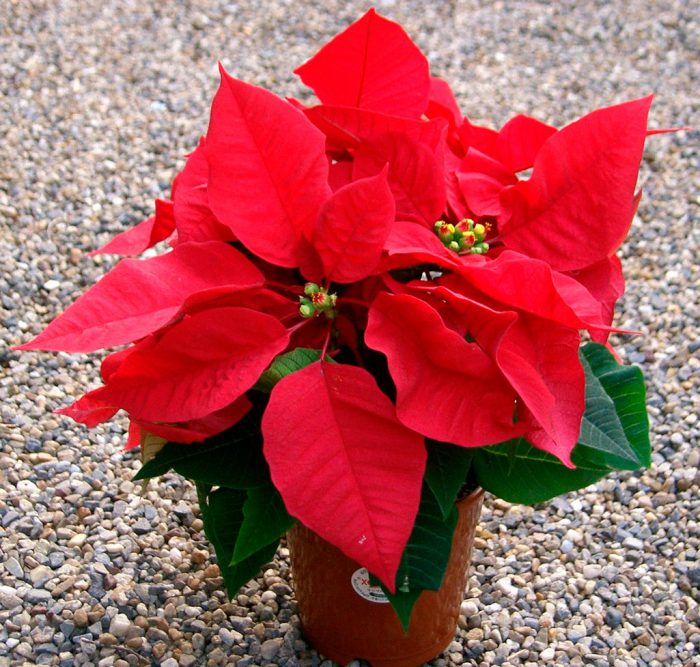
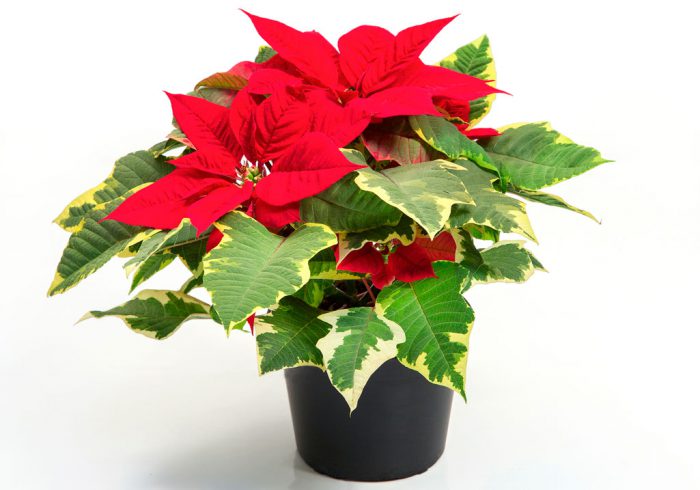
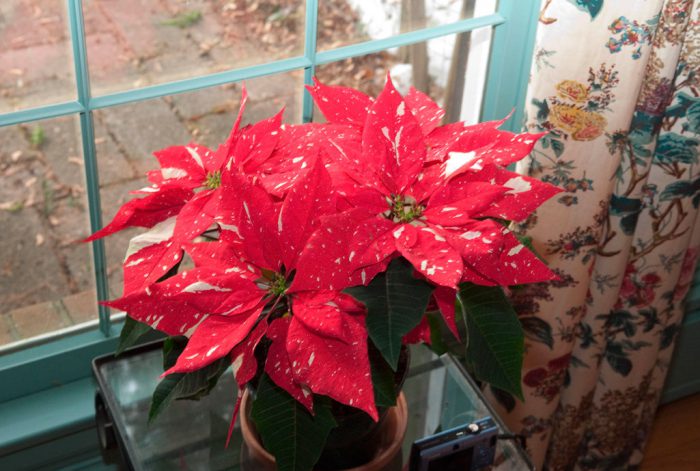
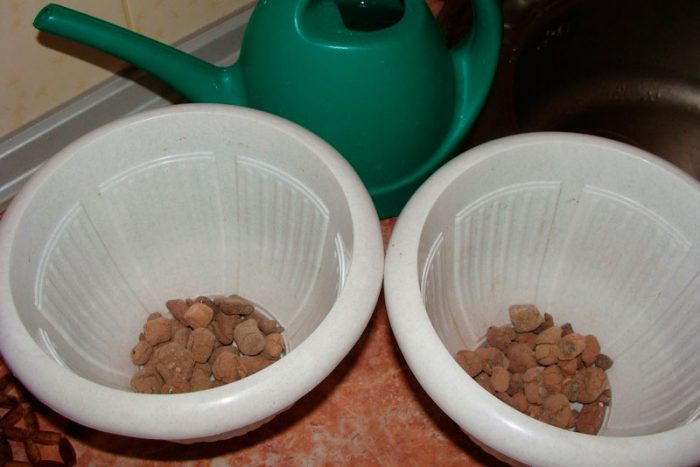





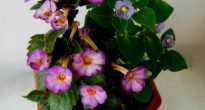
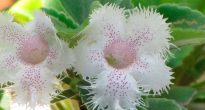

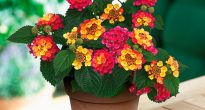

The spider mite is not necessarily red. By the way, in the photo at the specified link, it is just a little pinkish. Or maybe only slightly creamy.